Carbon emission management means controlling and reducing the amount of carbon released into the atmosphere from human activities. You see the effects of carbon every day—from driving cars to running factories. Managing carbon emission management matters to you, your community, and the planet.
- Over the past decade, global carbon emissions have stayed mostly flat, though fossil carbon emissions rose by 4.9% in 2021, nearly returning to previous levels. Manufacturing plays a big role in carbon emission management, especially for companies trying to meet safety and environmental standards. Digital tools like FineBI help you track and analyze carbon data, making climate action urgent and achievable. Consider how your choices and actions can support better carbon emission management.
Carbon Emission Management Overview

Key concepts
You need to understand the core ideas behind carbon emission management to build an effective carbon management plan. Carbon emission management focuses on controlling and reducing greenhouse gas emissions from your activities. This process helps you identify where carbon comes from, how much you produce, and what you can do to lower your impact.
The core components of carbon emission management include:
- Measuring your carbon footprint to understand your greenhouse gas emissions.
- Identifying sources of emissions within your operations and supply chain.
- Implementing strategies to reduce emissions and achieve net-zero goals.
You will often see emissions grouped into three main categories, known as scopes. These scopes help you organize your carbon management strategies and track progress more effectively.
| Emission Type | Scope | Definition | Examples |
|---|---|---|---|
| Direct Emissions | Scope 1 | Emissions from operations you own or control | Fuel combustion in company vehicles, boilers, or generators |
| Indirect Emissions | Scope 2 | Emissions from purchased electricity, steam, heating, or cooling | Electricity used in your offices or factories |
| Indirect Emissions | Scope 3 | All other indirect emissions in your value chain | Emissions from suppliers, product use, or waste disposal |
By understanding these scopes, you can develop targeted carbon management frameworks and strategies that address each area of your business.
Main activities
When you start carbon emission management, you take part in several key activities. These activities form the backbone of any carbon management strategy and help you move toward lower greenhouse gas emissions.
- Measure your emissions to identify sources and set reduction targets.
- Improve energy efficiency by conducting audits and making operational changes.
- Optimize your supply chain by encouraging sustainable practices among suppliers.
- Invest in renewable energy sources to reduce your carbon footprint.
- Implement carbon offsetting strategies to balance out any remaining emissions.
You need to focus on reducing emissions within your infrastructure and supply chain. You can also invest in carbon offsets to mitigate emissions that are hard to eliminate. Each of these steps supports your overall carbon management plan and helps you meet regulatory and sustainability goals.
Tip: Regularly reviewing your carbon management strategies ensures you stay on track and adapt to new challenges or opportunities.
Measuring emissions
Accurate measurement is the foundation of carbon emission management. You need reliable data to set baselines, track progress, and report results. In the manufacturing sector, several methods help you measure greenhouse gas emissions effectively:
| Method | Description |
|---|---|
| Non-Dispersive Infrared (NDIR) | Uses infrared light to detect CO2, suitable for continuous monitoring. |
| Chemical Absorption Methods | Passes gas through a solution that absorbs CO2, ideal for precise spot-checks. |
| Mass Balance Method | Estimates emissions based on input and output of carbon materials, practical for industrial settings. |
| Emission Factor Approach | Uses standard factors to estimate CO2 per unit of activity, cost-effective for reporting. |
| Remote Sensing Techniques | Measures CO2 from a distance, useful for monitoring large areas and trends. |
| Portable CO2 Monitors | Compact devices for quick spot-checks, often using NDIR sensors. |
| Fixed-Point CO2 Analysers | Installed for continuous monitoring in specific locations, essential for compliance. |
| Continuous Emission Monitoring | Real-time systems required for regulatory compliance, providing detailed operational data. |
You can use digital tools like FineBI to integrate and analyze carbon data from multiple sources. FineBI connects to databases, sensors, and spreadsheets, allowing you to visualize emissions data in real time. This capability supports your carbon management strategies by making it easier to identify trends, set baselines, and report on your progress.
A strong carbon management framework relies on accurate measurement, clear reporting, and ongoing analysis. By using advanced tools and proven methods, you can build a carbon management strategy that delivers real results for your business and the environment.
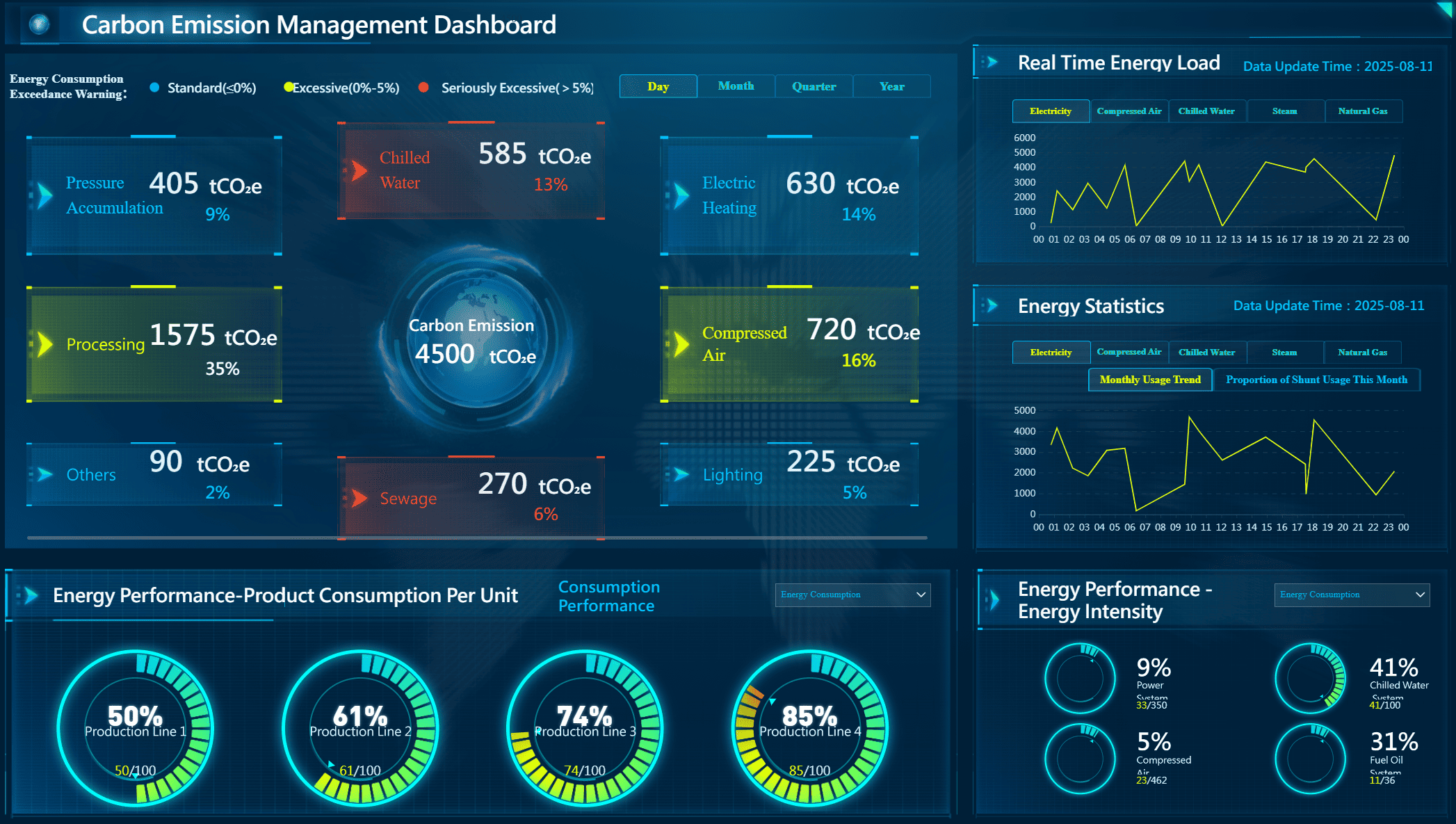
Why Carbon Emission Management Matters
Climate change impact
You play a crucial role in addressing climate change through carbon management. Scientific studies show a strong link between carbon dioxide levels and global temperature rise. Over the past 485 million years, researchers have found that changes in carbon dioxide concentrations closely match shifts in temperature. Ice core samples from Antarctica reveal that carbon dioxide levels remained below 300 ppm for thousands of years, but have surged since the 19th century. This rapid increase in greenhouse gas concentrations is driving climate change today.
Carbon dioxide is the most significant long-lived greenhouse gas. It absorbs and radiates heat, intensifying the natural greenhouse effect. Human activities, especially those in manufacturing, have increased carbon dioxide emissions, causing global temperatures to rise. Since 1990, carbon dioxide has accounted for about 80% of the heating influence from all human-produced greenhouse gases. When you manage carbon emissions, you help slow climate change and protect the environment for future generations.
Manufacturing contributes about 33% of global emissions, more than the power and transportation sectors. Factories rely on fossil fuels, and materials like steel and cement produce large amounts of carbon dioxide. By focusing on carbon emission management, you can reduce emissions from these sources and support decarbonization efforts.
| Sector | Contribution to Emissions |
|---|---|
| Manufacturing | ~33% |
| Power Sector | Less than Manufacturing |
| Transportation Sector | Less than Manufacturing |
You can see that manufacturing is a major driver of climate change. Carbon management strategies, such as carbon reduction and decarbonization, help lower greenhouse gas emissions and slow the pace of global warming.
Regulatory and economic drivers
You must understand the regulatory and economic reasons for carbon emission management. Governments around the world have created laws and frameworks to control greenhouse gas emissions. In 2024, many states introduced new regulations for CO₂ capture, transport, and storage. These rules affect your business and community by setting safety standards and creating economic opportunities.
| Key Aspect | Description |
|---|---|
| Compliance with Regulations | You must follow local and international laws for carbon management practices. |
| Alignment with Global Frameworks | You should align your strategies with agreements like the Paris Agreement. |
| Economic Benefits | Strong carbon management can save money through better energy efficiency. |
| Environmental Mitigation | Reducing emissions is essential for fighting climate change and its effects. |
Legislation provides clear guidelines for monitoring carbon management projects. You need to ensure public safety and protect the environment. Economic incentives and penalties also shape your approach to carbon management. In China, high penalties and low rewards sometimes lead companies to focus on profit rather than compliance. You should design carbon management strategies that balance incentives and penalties, encouraging decarbonization and carbon reduction.
Note: FineBI supports compliance and reporting by integrating data from multiple sources. You can use FineBI to track emissions, monitor regulatory changes, and generate reports that meet legal requirements. This helps you stay ahead of new regulations and avoid penalties.
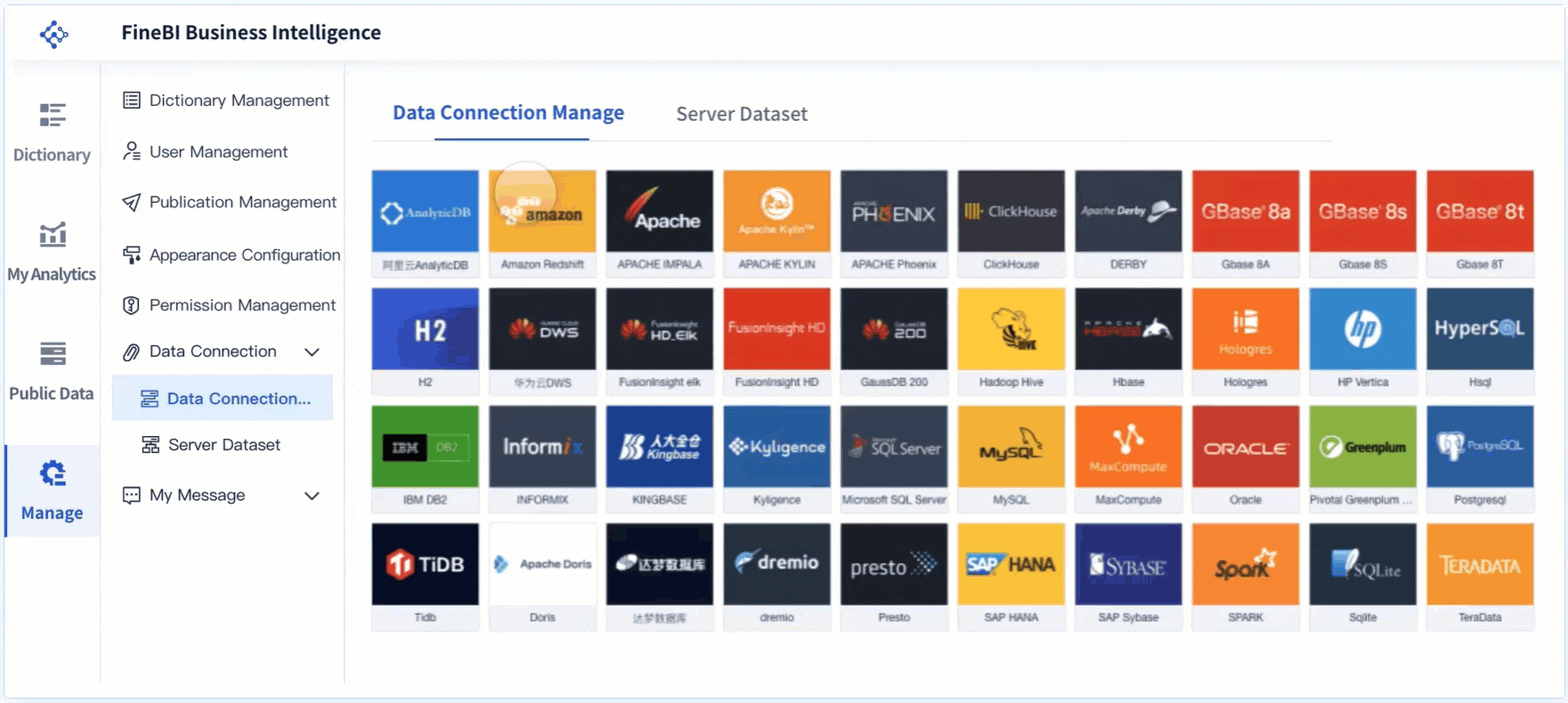
Social responsibility
You have a responsibility to your community and stakeholders to adopt carbon emission management strategies. Technology enables you to manage carbon emissions efficiently, aligning with regulatory requirements and corporate social responsibility goals. Governments are pushing for carbon regulatory policies, and consumers expect organizations to move toward a zero-carbon society.
| Driver | Impact |
|---|---|
| Technology | Efficient management of carbon emissions and alignment with social responsibility goals |
| Government Policies | Pressure to adopt carbon management strategies |
| Consumer and Stakeholder Demand | Influence toward zero-carbon society |
You can use EHS digital solutions to support your social responsibility initiatives. These tools help you track and report environmental impact, measure carbon emissions, and ensure regulatory compliance. EHS platforms automate sustainability efforts, reduce administrative work, and foster a culture of decarbonization within your organization.
- EHS digital solutions provide tools for tracking and reporting environmental impact, which is essential for measuring carbon emissions.
- They ensure regulatory compliance, helping you follow evolving environmental standards and avoid penalties.
- These solutions automate sustainability initiatives, reducing administrative burdens and promoting a culture of sustainability.
FineBI enhances your carbon management efforts by offering real-time data integration, visualization, and reporting. You can use FineBI to share progress with stakeholders, demonstrate your commitment to carbon emission management, and support your journey toward decarbonization.
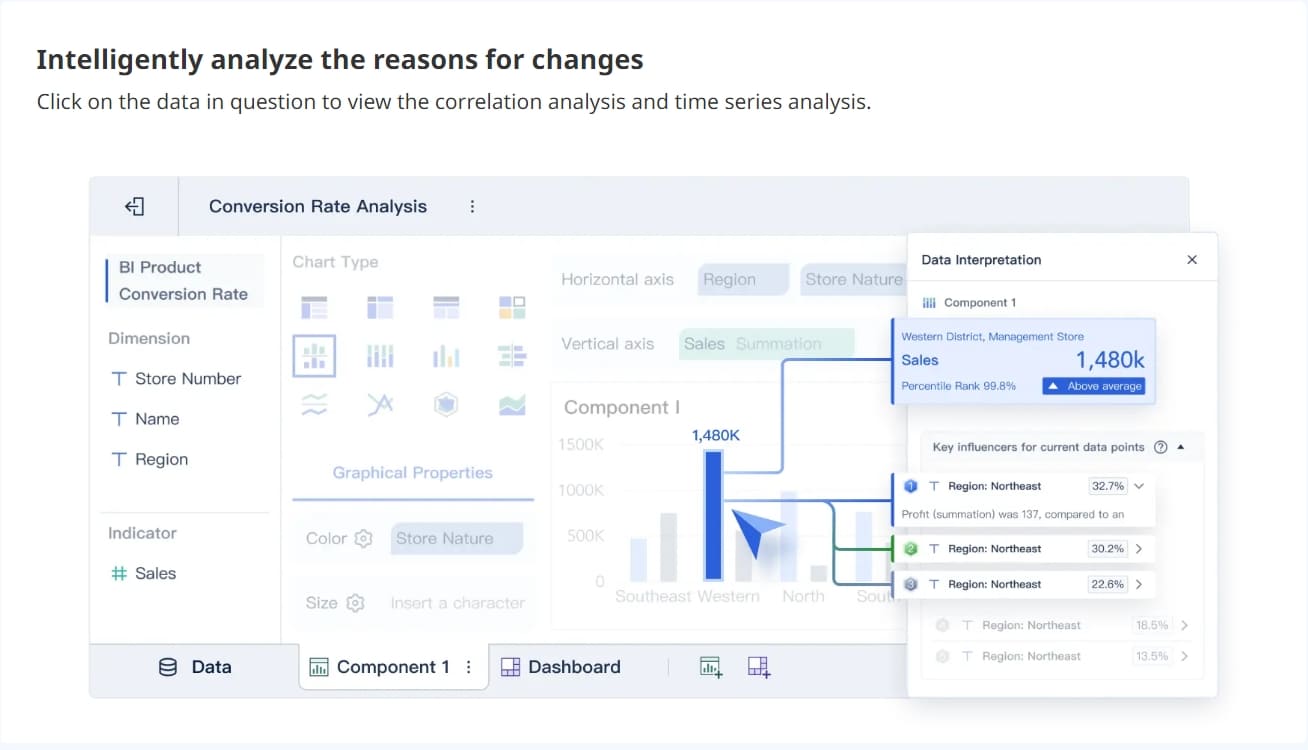
Tools for Effective Carbon Emission Management
Data integration with FineBI
You need strong data integration to make carbon emission management effective. Carbon management depends on accurate, up-to-date information from many sources. You might collect emissions data from sensors, production logs, and energy bills. Carbon management systems must bring all this data together for analysis. FineBI helps you connect to databases, spreadsheets, and even real-time sensors. You can schedule updates, so your carbon data stays current. This integration supports your carbon management goals by making it easier to track emissions, renewable energy use, and carbon capture activities across your operations.
Visualization and analysis
Visualization and analysis are key parts of carbon emission management. You need to see trends and patterns in your carbon data to make smart decisions. FineBI lets you build self-service dashboards that show emissions, renewable energy usage, and carbon capture progress. You can drag and drop charts, apply filters, and create reports without coding. This helps you spot areas where emissions are high or where renewable energy adoption is low. You can also share dashboards with your team, making carbon management a group effort. FineBI uses role-based access control to keep your data secure and compliant.
| Benefit | Description |
|---|---|
| Increased Security | RBAC restricts access based on roles, preventing unauthorized access and reducing data breach risks. |
| Better Compliance | Helps organizations meet regulatory requirements by managing access to sensitive information. |
| Improved Productivity | Users access only necessary resources, enhancing efficiency and reducing navigation issues. |
| Monetary Savings | Streamlines access management, reducing administrative costs and potential financial losses. |
| Compliance Adherence | Enforces access controls to meet compliance standards like GDPR and HIPAA. |
| Business Efficiency | Simplifies onboarding/offboarding and clarifies access rights, promoting accountability. |
Real-time monitoring
Real-time monitoring makes carbon emission management more responsive and accurate. You can track emissions, renewable energy use, and carbon capture in real time. FineBI supports real-time dashboards, so you see changes as they happen. In manufacturing, this means you can respond quickly to emissions spikes or drops in renewable energy output. Real-time monitoring also helps you meet regulations and report on carbon management progress.
- Digital monitoring gives you instant insights into carbon emissions.
- Automated data collection and analysis improve reporting efficiency.
- Transparency increases, so stakeholders can see your carbon management efforts.
| Evidence | Description |
|---|---|
| Real-time monitoring | Digital Twin technology provides dynamic representations of manufacturing processes, allowing for real-time tracking of carbon emissions and energy consumption. |
| Predictive analytics | AI and machine learning enable the analysis of data to predict future emissions and optimize processes accordingly. |
| Compliance with regulations | The framework supports manufacturers in meeting the European Union’s Carbon Border Adjustment Mechanism (CBAM) by ensuring accurate reporting of emissions. |
You can use FineBI to support carbon emission management in manufacturing and EHS management. FineBI helps you integrate data, visualize trends, and monitor emissions in real time, making your carbon management strategy more effective.

Benefits of Carbon Emission Management

Business advantages
You gain many business advantages when you focus on effective carbon management. You lower your carbon footprint and improve your company’s reputation. You save money by investing in energy-efficient technologies. You also strengthen your brand and stand out in the market. Effective carbon management helps you access capital more easily because investors prefer companies with clear decarbonization strategies. You create new revenue opportunities by developing innovative products and services. You reduce risks by relying less on fossil fuels and prepare for future regulations. You also improve operational efficiency and build long-term resilience.
- Energy cost savings from efficient technologies.
- Enhanced access to capital through strong risk management.
- Stronger brand reputation and market differentiation.
- Innovation and new revenue opportunities.
- Risk mitigation and regulatory readiness.
- Operational efficiency and waste reduction.
- Long-term resilience for changing conditions.
FineBI supports you by improving efficiency and decision-making. You use FineBI to track your carbon footprint, analyze emissions, and report progress. This helps you meet sustainability goals and stay competitive.
Environmental impact
Effective carbon management leads to measurable environmental benefits. You reduce your carbon footprint by using advanced technologies and sustainable materials. You make smarter design and procurement decisions with lifecycle assessments. You save money and support environmental sustainability by choosing eco-friendly alternatives. You also follow circular economy principles, focusing on reuse and recycling to minimize your impact.
| Impact Area | Description |
|---|---|
| Lifecycle Assessments | Identify emissions hotspots and inform smarter decisions. |
| Energy Efficiency | Reduce energy consumption and lower carbon emissions. |
| Material Choices | Use sustainable materials and improve logistics. |
| Circular Economy Principles | Reuse and recycle to minimize environmental impact. |
| Digital Transformation | Remote audits and collaboration reduce travel emissions. |
| System Upgrades | High-efficiency motors and improved heating/cooling cut emissions. |
| Production Footprint Optimization | Achieve regulatory compliance and long-term cost savings. |
Manufacturing companies use FineBI to optimize their carbon emission management. You monitor emissions, identify reduction opportunities, and support environmental sustainability.
Community and employee well-being
Effective carbon management improves community and employee well-being. You invest in training programs to enhance skills and performance. You commit to occupational safety and work to eliminate workplace incidents. You support community programs and encourage employees to participate in local activities. You offer public transportation subsidies and paid volunteer days for environmental causes. You help employees reduce their carbon footprint at home and during commutes.
| Aspect | Description |
|---|---|
| Employee Training | Enhance skills and performance. |
| Occupational Safety | Eliminate workplace incidents and integrate safety principles. |
| Community Support | Promote social programs and community participation. |
| Employee Involvement | Encourage volunteering and support with financial contributions. |
Manufacturing companies use EHS digital solutions to improve carbon emission management. You create safer workplaces, support local communities, and promote sustainability. FineBI helps you share progress and engage stakeholders in your carbon management journey.
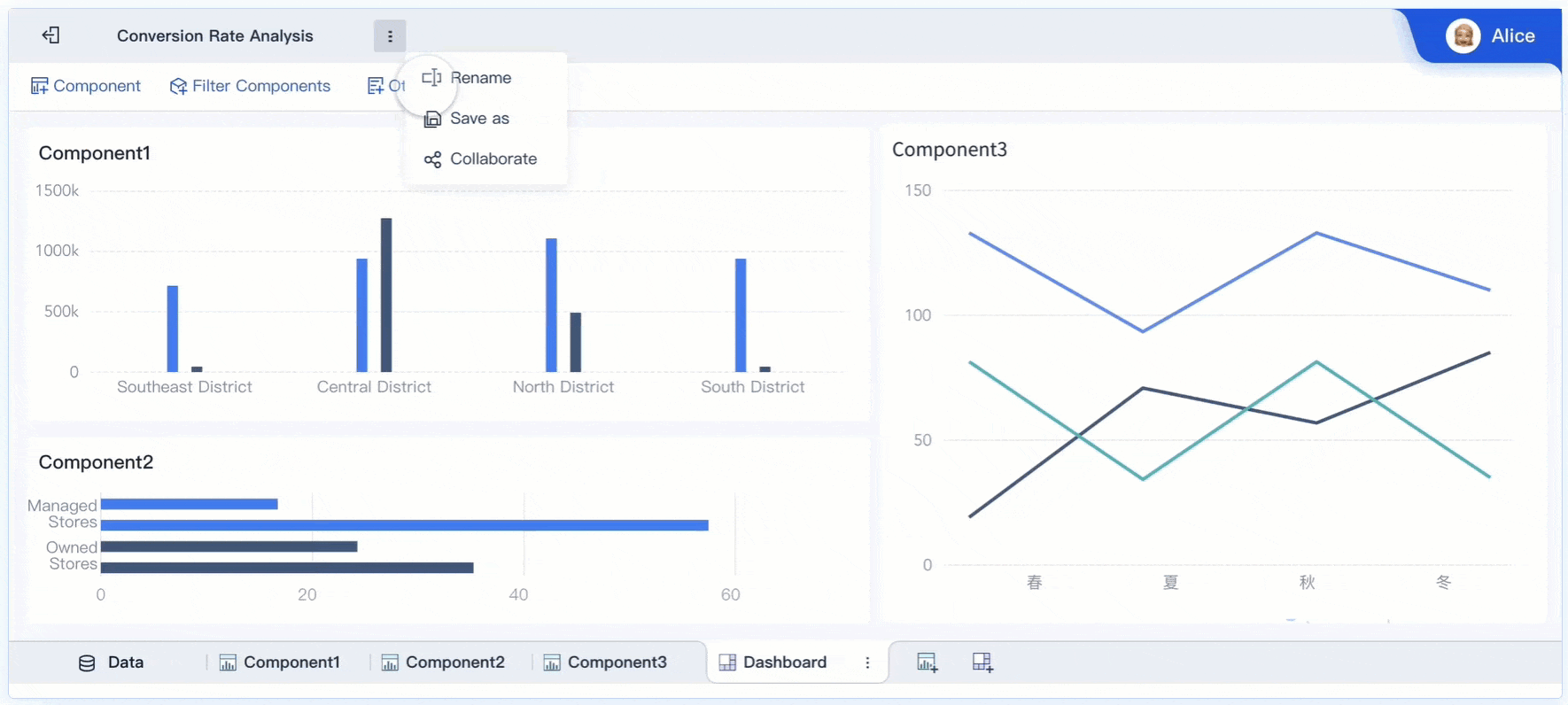
Overcoming Challenges in Carbon Emission Management
Common obstacles
You face several obstacles when you implement carbon emission management. Many organizations struggle with a lack of data infrastructure. You may find it difficult to collect and manage emissions data from different sources. Reporting formats often lack standardization, which makes it hard to compare results or meet regulatory requirements. You might also encounter a shortage of carbon accounting expertise. This can slow down your progress and lead to errors in your carbon emission management strategy.
- Lack of data infrastructure
- Lack of standardization in reporting formats
- Insufficient carbon accounting expertise
You need to recognize these barriers early. Addressing them helps you build a strong foundation for your carbon emission management plan.
Solutions and best practices
You can overcome these challenges by following proven strategies. Routine assessments help you identify areas for improvement in your carbon emission management process. Use data-driven insights from analytics tools like FineBI to make informed decisions. Benchmark your performance against industry standards to track your progress. Cross-functional collaboration brings together stakeholders from different departments, improving risk management and compliance.
- Routine assessments
- Data-driven insights
- Benchmarking against industry standards
- Cross-functional collaboration
You should also conduct life cycle assessments to analyze the environmental impact of your products. Technology and innovation, such as advanced monitoring and analytics, optimize your carbon reduction strategies. Engage your supply chain partners to implement sustainable practices. Decarbonization initiatives become more effective when you use digital tools and involve all stakeholders.
Tip: The PDCA (Plan-Do-Check-Act) cycle supports continuous improvement in carbon emission management. You plan your strategy, implement changes, check results, and act on feedback for ongoing progress.
Success stories
You can learn from organizations that have achieved significant results in carbon emission management. EcoTech Solutions, a manufacturing company, reduced carbon emissions by 50% through energy-efficient technology and process optimization. GreenWay Logistics cut emissions by 50% by adopting hybrid and electric trucks and optimizing routes. SustainableTech Solutions lowered its carbon footprint by 50% by using renewable energy and smart building technologies.
EHS management systems play a key role in these successes. They track air emissions, waste, energy use, and water consumption. They help manage environmental permits and calculate carbon footprints. Honeywell integrated EHS into its operations, demonstrating compliance, reducing safety risks, and achieving greenhouse gas emission objectives.
| Feature | Description |
|---|---|
| Monitoring and Reporting | Tracks air emissions, waste, energy usage, and water consumption. |
| Environmental Permits Management | Helps track and renew environmental permits. |
| Waste Management | Manages waste disposal and recycling processes. |
| Carbon Footprint Calculation | Calculates carbon footprint and other sustainability metrics. |
You can use these examples to guide your own carbon emission management journey.
You play a vital role in carbon emission management. When you take action, you help your business, your community, and the planet. Digital tools like FineBI make it easier to track, analyze, and report emissions. You gain many benefits, as shown below:
| Benefit | Description |
|---|---|
| Competitive Advantage | Stand out in the market and attract eco-conscious customers. |
| Risk Mitigation | Manage regulations and reduce operational risks. |
| Revenue Generation | Make your products more appealing in a green economy. |
| Reputational Enhancement | Build trust with customers, investors, and employees. |
| Investor Appeal | Attract financial support from sustainability-focused investors. |
| Regulatory Advantage | Gain access to incentives and subsidies. |
| Supply Chain Optimization | Improve efficiency and cut costs while lowering emissions. |
You can drive positive change by following best practices:
- Invest in renewables and energy efficiency.
- Choose certified carbon offsets.
- Support nature-based projects.
- Engage in direct, impactful initiatives.
Start your carbon emission management journey today and help create a sustainable future.
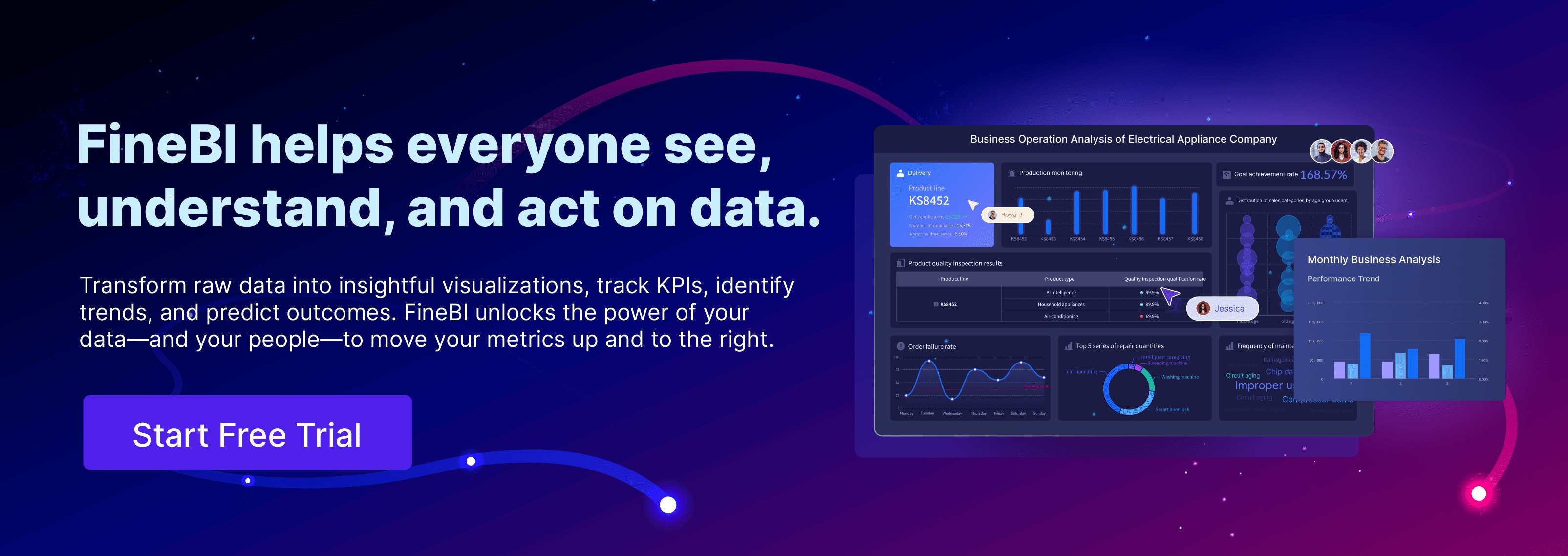
Continue Reading About Carbon Emission Management
How to Do Retention Analysis for Business Success
What is Pareto Chart and How Does it Work
How DuPont Analysis Helps You Understand Your Business
FAQ

The Author
Lewis
Senior Data Analyst at FanRuan
Related Articles
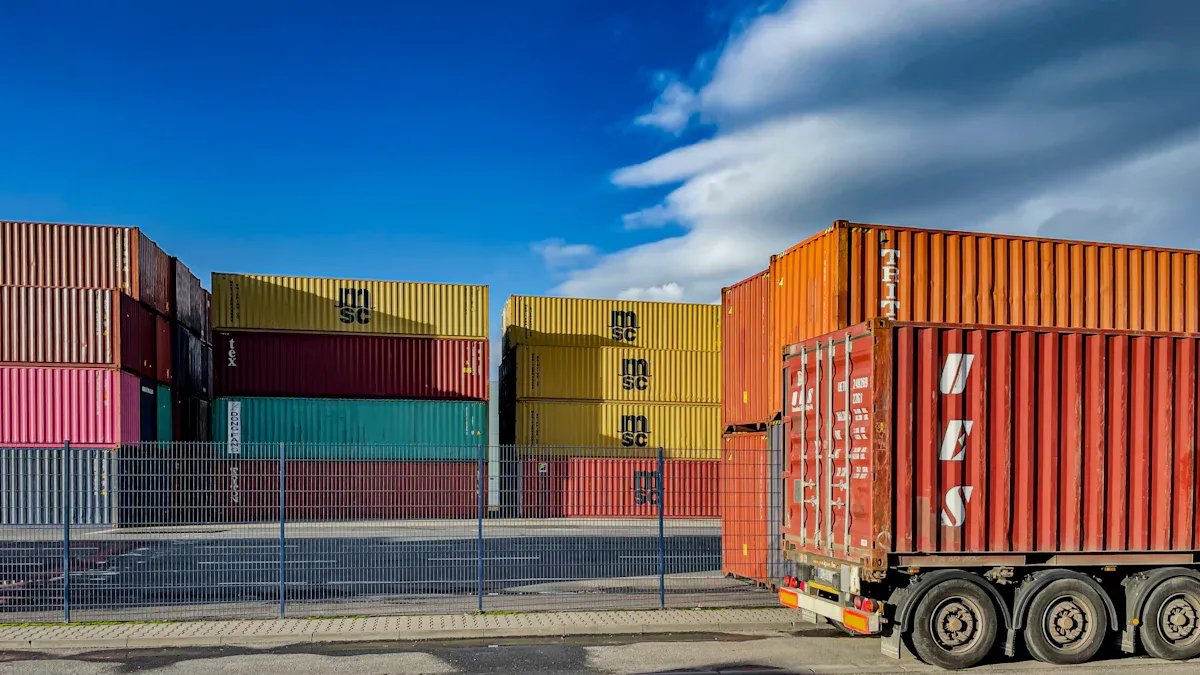
Top 10 Supply Chain Visibility Tools for 2025
Compare the top 10 supply chain visibility tools for 2025 to enhance real-time tracking, integration, and predictive analytics for efficient operations.
Lewis
Oct 29, 2025

What is Green Manufacturing and Its Key Principles
Green manufacturing uses eco-friendly processes to boost energy efficiency, reduce waste, and promote sustainable materials in production.
Lewis
Oct 10, 2025

What ESG Risk Management Is and Why It Matters For Companies
ESG risk management helps companies identify, assess, and address environmental, social, and governance risks for better performance and compliance.
Lewis
Oct 10, 2025



